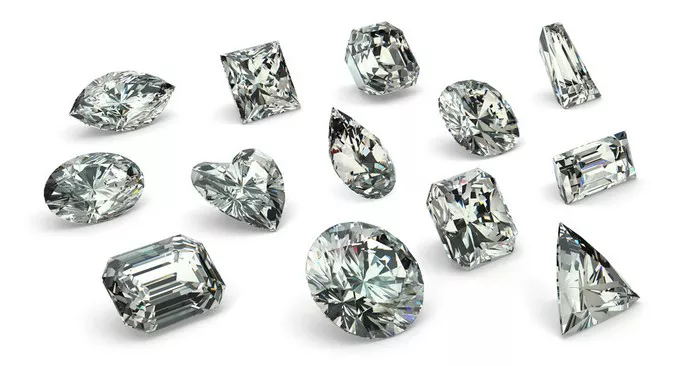Historical Origins of Diamonds:
Diamonds, those dazzling gemstones coveted for their brilliance and rarity, boast a rich history that spans millennia. The tale of their popularity begins in the ancient lands of India during the 4th century BC. It was here that humans first stumbled upon these precious stones, marveling at their exquisite beauty and unparalleled hardness. Initially treasured for their symbolic significance and believed mystical powers, diamonds gradually found their way into the realm of adornment.
By the 13th century, diamonds had journeyed from the East to the courts of Europe, where they became symbols of wealth and prestige. Royals and nobles adorned themselves with these glittering gems, embedding them into crowns, scepters, and jewelry, showcasing their opulence and power. Despite their rarity and the labor-intensive process required for their extraction and cutting, diamonds captured the imagination of the elite and became synonymous with luxury.
Peak Popularity of Diamonds:
The zenith of diamond popularity arrived in the 16th century, as advancements in gem-cutting techniques enhanced their brilliance and allure. Diamonds were now not just symbols of status but also objects of desire for the burgeoning middle class. The diamond trade flourished, with merchants traversing continents to satisfy the growing demand for these precious stones.
By the 19th century, diamonds had firmly established themselves as the ultimate symbol of love and commitment. Engagement rings adorned with diamonds became de rigueur among the affluent, cementing the gemstone’s association with romance and everlasting devotion. The diamond industry thrived, fueled by the insatiable appetite for these exquisite gems.
South African Discovery of Diamonds:
The landscape of the diamond trade underwent a seismic shift in the 1870s with the discovery of extensive diamond deposits in South Africa. The Kimberley diamond mine, among others, yielded an unprecedented influx of diamonds, flooding the market and challenging the notion of their scarcity. Suddenly, diamonds were no longer the exclusive domain of the elite but were accessible to a broader segment of society.
This abundance led to a decline in the perceived value of diamonds, as their once-rare status diminished. However, diamond merchants, led by the visionary Cecil Rhodes, recognized the need to control the supply to maintain profitability. Thus, the consolidation of diamond mines under companies like De Beers laid the foundation for modern diamond cartels, ensuring a semblance of scarcity in an era of abundance.
Resurgence of Diamonds in the Mid-20th Century:
The mid-20th century witnessed a resurgence in diamond popularity, propelled by shrewd marketing strategies and cultural influences. De Beers, under the leadership of Harry Oppenheimer, launched groundbreaking advertising campaigns that transformed diamonds into symbols of enduring love and commitment. The iconic slogan “A Diamond is Forever” captured the imagination of consumers worldwide, imbuing diamonds with emotional significance beyond their intrinsic value.
Additionally, the concept of the “eternity ring” gained traction during this period, further solidifying diamonds’ association with eternal love and fidelity. Hollywood celebrities adorned themselves with dazzling diamond jewelry, setting trends and fueling consumer demand. Diamonds became not just accessories but cultural icons, epitomizing romance, glamour, and luxury.
Modern-Day Production of Diamonds:
Today, the diamond industry is a global powerhouse, with production exceeding one hundred million carats annually. While historically concentrated in regions like India and Brazil, diamond mining has expanded to encompass diverse locales, including Canada, Russia, and Australia. Technological advancements have revolutionized the extraction and processing of diamonds, making them more accessible than ever before.
However, challenges persist in the diamond industry, including concerns regarding ethical sourcing and environmental sustainability. Consumers increasingly demand transparency and accountability from diamond companies, prompting initiatives such as the Kimberley Process Certification Scheme to combat the trade in conflict diamonds. Additionally, lab-grown diamonds have emerged as a sustainable alternative, offering ethical consumers a guilt-free option without compromising on quality or beauty.
In conclusion, the popularity of diamonds has undergone a remarkable evolution, from their humble origins in ancient India to their status as global symbols of love and luxury. While their allure remains undiminished, the diamond industry continues to adapt to changing consumer preferences and societal values. Whether mined from the depths of the earth or grown in a laboratory, diamonds continue to captivate and inspire, transcending time and culture with their eternal brilliance.

